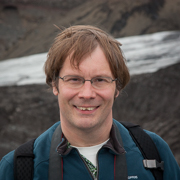-
Courses
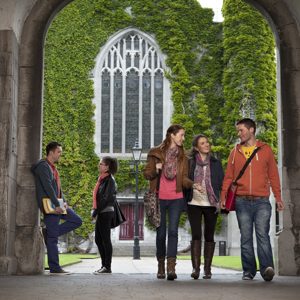
Courses
Choosing a course is one of the most important decisions you'll ever make! View our courses and see what our students and lecturers have to say about the courses you are interested in at the links below.
-
University Life
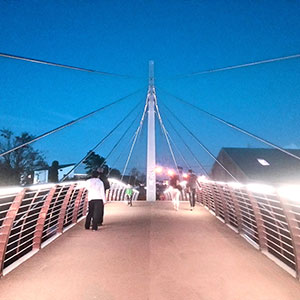
University Life
Each year more than 4,000 choose University of Galway as their University of choice. Find out what life at University of Galway is all about here.
-
About University of Galway
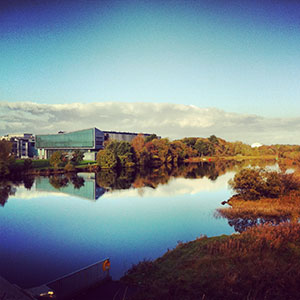
About University of Galway
Since 1845, University of Galway has been sharing the highest quality teaching and research with Ireland and the world. Find out what makes our University so special – from our distinguished history to the latest news and campus developments.
-
Colleges & Schools
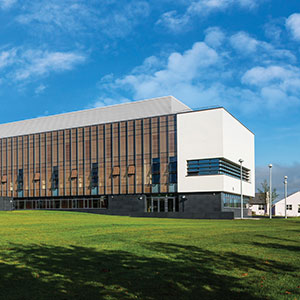
Colleges & Schools
University of Galway has earned international recognition as a research-led university with a commitment to top quality teaching across a range of key areas of expertise.
-
Research & Innovation
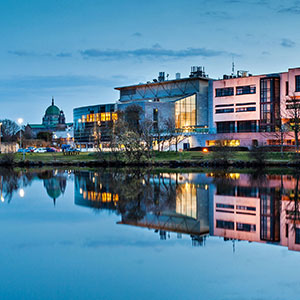
Research & Innovation
University of Galway’s vibrant research community take on some of the most pressing challenges of our times.
-
Business & Industry
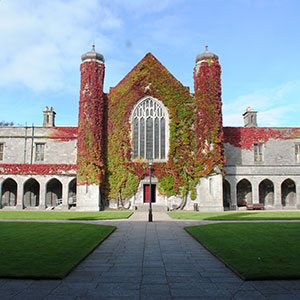
Guiding Breakthrough Research at University of Galway
We explore and facilitate commercial opportunities for the research community at University of Galway, as well as facilitating industry partnership.
-
Alumni & Friends
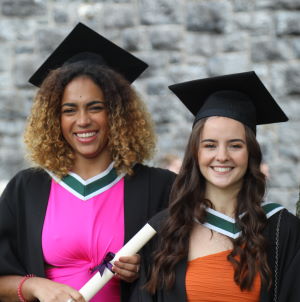
Alumni & Friends
There are 128,000 University of Galway alumni worldwide. Stay connected to your alumni community! Join our social networks and update your details online.
-
Community Engagement
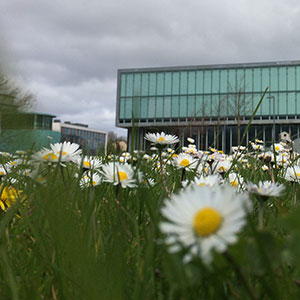
Community Engagement
At University of Galway, we believe that the best learning takes place when you apply what you learn in a real world context. That's why many of our courses include work placements or community projects.
Events Archive 2016
Monday, 5 December 2016
Quanta Image Sensor
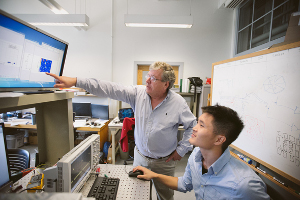 Image sensors are found at the heart of every camera system and convert incoming light into electronic signals. Prof. Fossum and his colleagues at the Thyaer School of Engineering (Dartmouth College) are investigating image sensors for next-generation camera systems. This work involves multi-disciplinary electronics research including photonics and optics, semiconductor devices, mixed-signal integrated circuits and VLSI, digital image signal processing, and electronics systems design.
Image sensors are found at the heart of every camera system and convert incoming light into electronic signals. Prof. Fossum and his colleagues at the Thyaer School of Engineering (Dartmouth College) are investigating image sensors for next-generation camera systems. This work involves multi-disciplinary electronics research including photonics and optics, semiconductor devices, mixed-signal integrated circuits and VLSI, digital image signal processing, and electronics systems design.
Prof. Fossum and his colleagues are currently exploring the Quanta Image Sensor (QIS). The QIS is a revolutionary change in the way we collect images in a camera that is being invented at Dartmouth. In the QIS, the goal is to count every photon that strikes the image sensor, and to provide resolution of 1 billion or more specialized photoelements (called jots) per sensor, and to read out jot bit planes hundreds or thousands of times per second resulting in terabits/sec of data. The work involves design of deep-submicron jot devices, low-noise high-speed readout electronics, and novel ways of forming images from sequential jot bit planes at both the modeling and the simulation level and the characterization of actual devices and circuits.
Prof. Eric R. Fossum is the inventor of the CMOS active-pixel image sensor technology. He received his Ph.D. from Yale University and was a faculty member at Columbia University in NYC before joining the NASA Jet Propulsion Laboratory in Pasadena California. With colleagues from JPL, he founded Photobit Corporation where he served in several management roles including CEO. Photobit was acquired by Micron Technology in 2001. He has over 120 US patents and has published over 240 technical papers. He has received numerous awards for his work including the NASA Exceptional Achievement Medal, The Royal Photographic Society Progress Medal, and the 2009 IEEE Andrew S. Grove Award. He is a Fellow member of the IEEE and was inducted into the NASA/DoD Space Technology Hall of Fame. For more details including publications please see www.ericfossum.com
Location: 203 Arts Science Seminar Room
Time: 1pm
Monday, 21 November 2016
Isotope measurements for the advancement of aerosol science
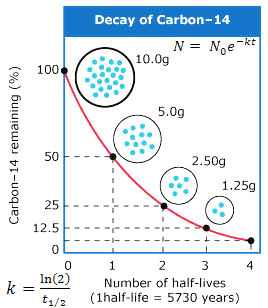 A discovery of isotopes about 100 years ago profoundly changed our understanding of the make-up of the universe. Isotope are often associated with radioactivity and indeed are the key in understanding nuclear reactions, but stable isotopes are as important enabling us to trace biogeochemical processes and organism functions. Isotope or radiometric dating of the distant past is the only reliable tool available to us and helped establishing a geological clock. Carbon isotopes are the most widely used ones in environmental sciences as they constitute organic matter. Isotopes carry their unique isotopic signatures through their transformations in the environment or the living things enlightening about their inner workings. Mass spectrometry enabled isotope measurements with unprecedented precision making identification of sources possible and enabling science with a powerful tool. Various applications of isotope measurements from source identification to process analysis will be discussed highlighting the key advancements.
A discovery of isotopes about 100 years ago profoundly changed our understanding of the make-up of the universe. Isotope are often associated with radioactivity and indeed are the key in understanding nuclear reactions, but stable isotopes are as important enabling us to trace biogeochemical processes and organism functions. Isotope or radiometric dating of the distant past is the only reliable tool available to us and helped establishing a geological clock. Carbon isotopes are the most widely used ones in environmental sciences as they constitute organic matter. Isotopes carry their unique isotopic signatures through their transformations in the environment or the living things enlightening about their inner workings. Mass spectrometry enabled isotope measurements with unprecedented precision making identification of sources possible and enabling science with a powerful tool. Various applications of isotope measurements from source identification to process analysis will be discussed highlighting the key advancements.
Speaker: Dr Darius Ceburnis (CCAPS, School of Physics, NUI Galway)
Location: 203 Arts Science Seminar Room
Time: 1pm
Monday, 7 November 2016
Challenges in Medical Imaging
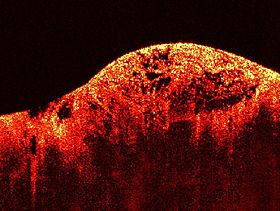 Technological innovations drive change in our view of the world, our understanding, our health and our way of life. The telescope and microscope almost immediately changed our understanding of the universe and building blocks of life. Huge strides have been made in our understanding of the mechanisms of disease through fundamental discoveries in biology and these often translate to clinical practice. However, there are many situations where this does not occur, and sometimes this is due to a lack of confidence that the behaviour is similar in a 3D living human to what we expect from studying the biology in a petri dish under a high resolution microscope. Microscopy and superresolution techniques are wonderful and have led to many new discoveries, but are generally limited by labels, sample prep and are very superficial. This means they are of limited use for understanding structure and function within living humans and there are many things in health and disease we do not understand.
Technological innovations drive change in our view of the world, our understanding, our health and our way of life. The telescope and microscope almost immediately changed our understanding of the universe and building blocks of life. Huge strides have been made in our understanding of the mechanisms of disease through fundamental discoveries in biology and these often translate to clinical practice. However, there are many situations where this does not occur, and sometimes this is due to a lack of confidence that the behaviour is similar in a 3D living human to what we expect from studying the biology in a petri dish under a high resolution microscope. Microscopy and superresolution techniques are wonderful and have led to many new discoveries, but are generally limited by labels, sample prep and are very superficial. This means they are of limited use for understanding structure and function within living humans and there are many things in health and disease we do not understand.
This seminar will discuss the role of innovation in medical imaging and the limitations we encounter when attempting to image important processes in humans.
Speaker: Prof. Martin Leahy (Tissue Optics and Microcirculation Imaging (TOMI), School of Physics, NUI Galway)
Location: 203 Arts Science Seminar Room
Time: 1pm
Monday, 24 October 2016
Next-Generation Auxiliary Power Unit for Heavy Trucks
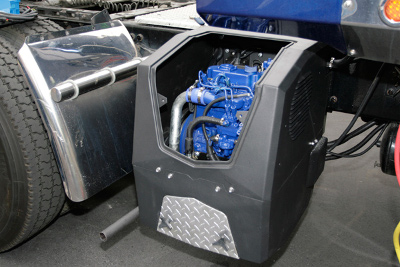 Truck auxiliary power units (APUs), are used during mandated driver rest periods in the United States on average for 1860 hours per year, to provide for “hotel loads”. Typically, the hotel load consists of a space heating load, cab air conditioning load and electrical power load for appliances such as refrigerators, cookers and electronic devices. Using an APU enables truck drivers to avoid idling the main truck engine - a practice which is extremely damaging to the environment, costly and has been heavily restricted by federal legislation. However, conventional APUs consist of diesel engine-vapour compression cooling systems (DEVC) which have intrinsic problems related to noise, particulate emissions and refrigerant usage. The long-term viability of DEVC technology is uncertain due to the impending Montreal Protocol phase-down of HFCs combined with increasingly more stringent engine emissions legislation.
Truck auxiliary power units (APUs), are used during mandated driver rest periods in the United States on average for 1860 hours per year, to provide for “hotel loads”. Typically, the hotel load consists of a space heating load, cab air conditioning load and electrical power load for appliances such as refrigerators, cookers and electronic devices. Using an APU enables truck drivers to avoid idling the main truck engine - a practice which is extremely damaging to the environment, costly and has been heavily restricted by federal legislation. However, conventional APUs consist of diesel engine-vapour compression cooling systems (DEVC) which have intrinsic problems related to noise, particulate emissions and refrigerant usage. The long-term viability of DEVC technology is uncertain due to the impending Montreal Protocol phase-down of HFCs combined with increasingly more stringent engine emissions legislation.
This presentation discusses the feasibility and potential benefits of replacing conventional DEVC systems with a free-piston Stirling engine coupled to a zeolite-water adsorption chiller. Such a system could offer a reduction of exhaust emissions, greenhouse gases (GHG), ozone-depleting substances, noise, low maintenance and the potential for fuel flexibility and higher reliability.years. Experimental results from a Stirling-adsorption system (SAS) prototype test rig are also presented which highlight system integration dynamics and overall performance. The adsorption chiller achieved an average COP of 0.42±0.06 and 2.3±0.1 kWt of cooling capacity at the baseline test condition. The prototype SAS test rig demonstrates that there appear to be no major technology barriers remaining that would prevent adoption of the SAS concept in a next-generation APU. Preliminary modelling results indicate that the proposed system could offer superior overall electrical and cooling efficiencies compared to incumbent APUs and demonstrate a payback period of 4.6
Speaker: Barry Flannery (BSc Physics, PhD candidate, Mech. Engineering)
Location: 203 Arts Science Seminar Room
Time: 1pm
Tuesday, 4 October 2016
The Future's Bright, The Future's Light
 TAKING NOVEL SCIENCE FROM THE LAB TO THE REAL WORLD
TAKING NOVEL SCIENCE FROM THE LAB TO THE REAL WORLD
FIRST-HAND EXPERIENCES FROM A PHOTONICS ENTREPRENEUR
WHAT OPPORTUNITIES EXIST FOR OPTICS AND PHOTONICS RESEARCH?
HOW DO YOU IDENTIFY REAL OPPORTUNITIES AND EXPLOIT THEM?
Dr Graeme Malcolm OBE
Scientist and entrepreneur Dr Graeme Malcolm has led a productive career in photonics and laser technology, responsible for the growth of 3 successful photonics companies whilst developing many new commercial lasers and photonics applications.
Graeme is currently focussed on finding solutions to some of society’s key problems, such as remote sensing for security and counter-terrorism, photonics to diagnose and treat diseases such as Alzheimers and dementia, systems to monitor climate change and food production, as well as finding new ways to enhance cell science through microscopy. Passionate about using science and technology to make a real difference to the world, Graeme devotes himself to supporting the UK’s scientific base. He was awarded an OBE by Her Majesty the Queen for his services to science and innovation and a Swan Medal from the Institute of Physics for his outstanding contributions to the application of physics in a commercial context.
Location: PHY203 (formerly 203 Moore Institute Seminar Room)
Time: 12.30PM
Thursday, 18 August 2016
New Roles for Imaging in Precision Cancer Therapy
The term precision medicine is commonplace in current dialogue, and it is frequently offered as a modern synonym for personalized medicine, but it is fair to ask whether either designation is apt in the context of cancer therapy. One marvels at the efficiency and precision of mapping a patient’s genome, but it is less obvious that the subsequent treatment decisions meet the standards of quantitative accuracy implied by the term precision, or that the treatment is personalized to any significant degree beyond selection of the drug for a particular patient. Consider the following critical open questions:
- Therapeutic efficacy is defined for populations of patients and measured by clinical trials, so what does it even mean to optimize a therapy for a particular patient? How can you verify that you have done so? This is the Fundamental Conundrum of personalized medicine. How can it be resolved?
- What biological and statistical models can be used to determine the optimum amount of a therapeutic agent to administer to a patient, taking into account the probability of tumor control and the potential occurrence of toxic side effects? Can the tradeoff between beneficial and deleterious effects of a drug be made quantitatively for an individual patient?
- A major uncertainty in chemotherapy and targeted radionuclide therapy or immunotherapy is the amount of drug delivered to the tumor bed and, for targeted agents, how much of the drug is bound to receptors on tumor cells and how much is internalized into the cells. How can quantitative measures of drug delivery and targeting efficiency be incorporated into estimates of probability of tumor control for an individual patient?
- There are many physiological mechanisms by which a tumor can acquire drug resistance. How can we discern which ones are operative in a particular patient? How can we evaluate medical and pharmaceutical interventions that would subvert these defensive strategies? Can the concept of induced drug resistance be made precise?
This talk will show how new methods of molecular imaging can be combined with mathematical methods from image science to provide rigorous answers to these questions.
Harrison H. Barrett, Ph.D.
Regents Professor, University of Arizona
Dr. Barrett received a bachelor's degree in physics from Virginia Polytechnic Institute in 1960, a master's degree in physics from MIT in 1962, and a Ph.D. in applied physics from Harvard in 1969. He worked for the Raytheon Research Division until 1974, when he came to the University of Arizona. He is a Regents Professor in the College of Optical Sciences and the Department of Medical Imaging in the College of Medicine, and he has appointments in Applied Mathematics, Biomedical Engineering and the University of Arizona Cancer Center. He is a fellow of the Optical Society of America, the Institute of Electrical and Electronic Engineers, the American Physical Society and the American Institute of Medical and Biological Engineering.
Dr. Barrett has received 27 U. S. patents and written or coauthored over 250 scientific papers; 62 students have received Ph.D. degrees under his direction. In collaboration with Kyle J. Myers, he has written a book entitled Foundations of Image Science, which in 2006 was awarded the First Biennial J. W. Goodman Book Writing Award from OSA and SPIE.
His other awards include a Humboldt Prize, the 2000 IEEE Medical Imaging Scientist Award, an E. T. S. Walton Award from Science Foundation Ireland, and the 2005 C. E. K. Mees Medal from the Optical Society of America. He was the 2011 recipient of the IEEE Medal for Innovations in Healthcare Technology and also the 2011 recipient of the SPIE Gold Medal of the Society. In 2014 he received an honorary doctorate in Engineering and Architecture from the University of Ghent in Belgium; he received the Paul C. Aebersold Award of the Society of Nuclear Medicine and Molecular Imaging, and he was elected to the National Academy of Engineering.
His research is in image science, with applications in medicine, astronomy and optics. He is co-director of the Center for Gamma-Ray Imaging, a Biomedical Technology Resource Center funded by NIBIB. Now in its eighteenth year, the Center develops state-of-the art instruments, algorithms and radiotracers for preclinical studies. A particular interest is in developing imaging methods that will open up new possibilities for personalized cancer therapy.
Location: Room 303, Clinical Science Institute (Top Floor)
Time: 3pm
Tuesday, 10 May 2016
Building simulation both complex and simple: two approaches to energy and air flow modelling
 The speaker is Dr. Wil Turner, who joined the ERC in 2014 as a Senior Energy Systems Researcher. Previously, Wil has worked at the Lawrence Berkeley National Laboratory in California, and at Trinity College Dublin. Time was spent at these institutions developing dynamic simulation models for smart cities, energy networks, renewable power generation, and carbon reduction technologies for the built environment. Wil currently conducts research under the Horizon 2020 Real Value project (http://www.realvalueproject.com/) , and will describe this research, and his earlier work, during the presentation.
The speaker is Dr. Wil Turner, who joined the ERC in 2014 as a Senior Energy Systems Researcher. Previously, Wil has worked at the Lawrence Berkeley National Laboratory in California, and at Trinity College Dublin. Time was spent at these institutions developing dynamic simulation models for smart cities, energy networks, renewable power generation, and carbon reduction technologies for the built environment. Wil currently conducts research under the Horizon 2020 Real Value project (http://www.realvalueproject.com/) , and will describe this research, and his earlier work, during the presentation.
Location: AO208
Time: 12pm
Friday, 15 April 2016
Kick-ass Applied Optics
Optics and Imaging are a rewarding and exciting research area. There are many diverse areas to apply our trade, from vision science, large and small scale astronomy, surveillance imaging, and terrestrial and space laser communications. These are areas where my research team involves themselves; all of them demanding in size, function, and for supporting electronics or electro-optics. I will give a brief overview of where we are focusing our efforts in each of these application areas, and concentrate on how these require not only good and novel optics, but sensor design, miniaturised, parallel and high speed electronics, as well as new active optical components.
Presenter: Prof Andrew Lambert, UNSW Canberra, Australia
Location: 101E (New Physics seminar room, downstairs ex-Moore Institute)
Time: 11am
Thursday, 10 March 2016
Ocean Velocities Inferred from Argo floats: Ocean Description and Statistics
Dr. Miquel Rosell-Fieschi from the Institut de Ciències del Mar de Barcelona (ICM-CSIC) will give an insight into his field of research - The inference of ocean velocities from Argo floats.
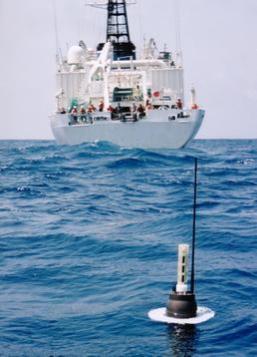 We are increasingly concerned about global change and its regional impacts. Understanding (and eventually predicting) changes in both the atmosphere and ocean are needed to guide international actions, to optimize governments' policies and to shape industrial strategies. A lack of sustained observations of the atmosphere, oceans and land have hindered the development and validation of climate models. To make those predictions we need improved models of climate and of the entire earth system (including socio-economic factors). In 1999, to combat this lack of data, an innovative step was taken by scientists to greatly improve the collection of observations inside the ocean through increased sampling of old and new quantities and increased coverage in terms of time and area. That step was Argo.
We are increasingly concerned about global change and its regional impacts. Understanding (and eventually predicting) changes in both the atmosphere and ocean are needed to guide international actions, to optimize governments' policies and to shape industrial strategies. A lack of sustained observations of the atmosphere, oceans and land have hindered the development and validation of climate models. To make those predictions we need improved models of climate and of the entire earth system (including socio-economic factors). In 1999, to combat this lack of data, an innovative step was taken by scientists to greatly improve the collection of observations inside the ocean through increased sampling of old and new quantities and increased coverage in terms of time and area. That step was Argo.
Argo is a global array of more than 3,000 free-drifting profiling floats that measures the temperature and salinity of the upper 2000 m of the ocean. This allows, for the first time, continuous monitoring of the temperature, salinity, and velocity of the upper ocean, with all data being relayed and made publicly available within hours after collection. Argo deployments began in 2000 and by November 2007 the millionth profile was collected. Today, even with more than 3600 active floats, there are still some areas of the ocean that are over-populated while others have gaps that need to be filled with additional floats. To maintain the Argo array, national programs need to provide about 800 floats per year.
Location: Seminar Room 203 (formerly Moore Institute Seminar Room)
Time: 11.00am
Monday, 15 February 2016
Sensing the Universe in Colour; Kinetic Inductance Detectors for optical and near-IR Astronomy
Dr. Kieran O'Brien (University of Oxford) will describe the ongoing work in the development of Microwave Kinetic Inductance Detectors (MKIDs) for optical and infra-red astronomy. These super-conducting devices represent an important step towards the development of the 'ultimate detector'; one that can measure the position, energy and arrival time of a photon. He will describe the operating principles of the devices and their current status. He will present the current MKID-based optical/IR instruments and show results from recent science demonstration runs. Finally, he will discuss the future promise of the technology and highlight some of the areas of astronomical instrumentation where they could have a transformational impact and outline the program at Oxford to exploit these devices.
These detectors will have an impact beyond astronomy where they might herald a similar shift in technology which followed the introduction of CCDs in the 1980s. The seminar should be of interest to everyone with an interest in Photonics.
Location: Seminar Room 203 (Old Moore Institute)
Time: 1pm
Monday, 1 February 2016
Defying Gravity: The physics of spaceflight
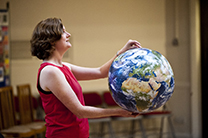 |
Humans have always been fascinated by space, but how far have we gone in our exploration of the solar system and how have we achieved it? We have been space explorers for just over half a century and in this time developments in technology have allowed us to travel and explore, either by going ourselves or by sending spacecraft to explore on our behalf. The knowledge gained from this exploration has benefitted us in many ways. This exploration continues today with research bases such as the International Space Station (ISS). Tim Peake is Britain’s first astronaut to visit the ISS and will be there from December 2015 to May 2016. |
This interactive session covers:
- The physics of spaceflight: including how rockets work, how to get into orbit
- Its history: how did we get to where we are today?
- Current research: what will Tim Peake’s mission to the ISS help us learn?
- Its future potential: focusing on Mars and what is required to get there
Lecturer Laura Thomas has always been fascinated by space and is looking forward to getting there herself one day. Since graduating with a degree in astrophysics from the University of Edinburgh in 2005, she has worked in science communication. In 2013 she toured the UK as the IOP Schools and Colleges’ lecturer, talking to 14- to 16-year-olds about the physics of spaceflight. Laura is a European Space Education Resource Office space ambassador, promoting the use of space as a context for learning. Laura works with lots of different organisations to promote science, technology, engineering and maths by developing resources and activities and providing support for teachers.
The location of the lecture can be found on the NUI Galway interactive map. Find out more information at: IOP Tyndall Lecure 2016
Location: O'Flaherty Theatre
Time: 12pm
Wednesday, 27 January 2016
Radon, our radioactive roommate: past, present and future
This presentation will overview the state of the art of radon research. Radon, a radioactive, natural and noble gas, is the second cause of lung cancer worldwide but it can also be used as a good tracer in many fields. One-half of the annual effective dose received by the general public from natural sources is due to the inhalation of radon gas. Radon accumulates in closed environments such as homes and workplaces. Therefore it is a risk of major concern when dealing with radiological protection to the general public and workers. In this presentation, an introduction will also be given to the ERA (European Radon Association), which was launched in May 2013 and is composed by about 80 individuals and 15 company members.
The speaker is Dr. José-Luis Gutiérrez Villanueva, researcher at the University of Cantabria at Santander, Spain. His research area is radiation physics with a particular focus on natural radioactivity. His PhD thesis title was “Radon measurements in air, soil and water”; alongside the experimental measurements, he developed a new system for measuring radon exhalation rates. His expertise includes measurement techniques on radioactivity (alpha, beta and gamma spectrometry, LSC, gamma dose rate), data analysis and radiological protection. José - Luis has a broad experience of international collaborations including research residencies at the Irish EPA (former RPII), Neuchâtel University (Switzerland) and a 2.5 years postdoctoral stay at SLU (Uppsala, Sweden). José – Luis is a founding member of ERA (European Radon Association), where he is the Secretary and sits on the Executive Committee.
Location: Room SC200A (Arts/Science Concourse)
Time: 2pm
Wednesday, 16 November 2016
Stellar Tidal Disruptions: new light on supermassive black holes
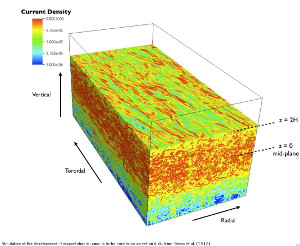 The disruption of a star in the tidal field of a supermassive black hole produces a transient burst of accretion that illuminates otherwise quiescent galactic nuclei. Tens of tidal disruptions have been observed to date, and thousands are likely to be detected by next-generation sky surveys, yielding new insights into black holes and galaxy evolution. Prof. Phil Armitage (Theoretical and Computational Astrophysics Group, University of Colorado Boulder) will review the physics of tidal disruptions, and discuss how they may help us solve longstanding problems of how black holes grow by mergers and accretion.
The disruption of a star in the tidal field of a supermassive black hole produces a transient burst of accretion that illuminates otherwise quiescent galactic nuclei. Tens of tidal disruptions have been observed to date, and thousands are likely to be detected by next-generation sky surveys, yielding new insights into black holes and galaxy evolution. Prof. Phil Armitage (Theoretical and Computational Astrophysics Group, University of Colorado Boulder) will review the physics of tidal disruptions, and discuss how they may help us solve longstanding problems of how black holes grow by mergers and accretion.
See Phil’s web site at http://jila.colorado.edu/~pja/
Location: Physics Seminar Room PHY203 (formerly 203 Moore Institute Seminar Room)
Time: 3pm








